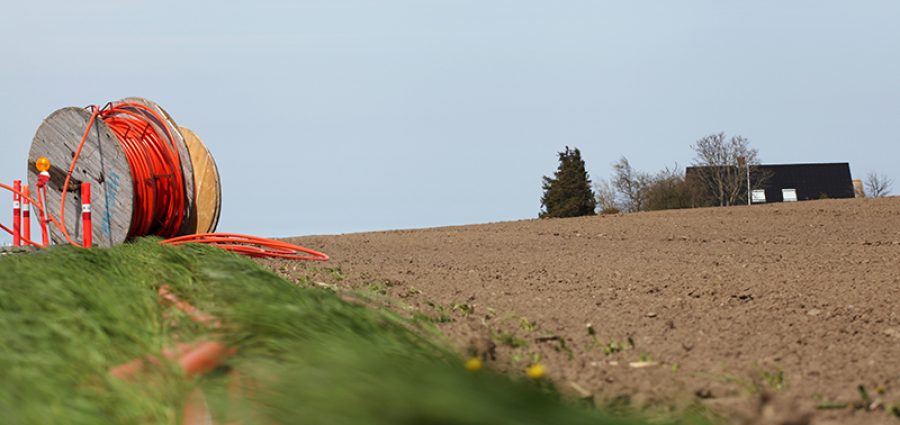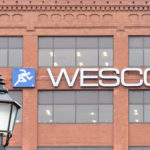During last week’s 2Q earnings call, WESCO International Chairman, President and CEO John Engel touted his company’s capabilities to help provision rural broadband deployments now that WESCO has integrated Anixter.
Specifically, Engel mentioned the Federal Communication Commission’s Rural Digital Opportunity Fund (RDOF). RDOF represents a $20 billion,10-year opportunity for internet service providers, utilities and municipalities, along with their vendor partners, to build and connect faster broadband speeds in rural and unserved areas across the U.S.
Phase I targeted rural areas that were wholly unserved census blocks where none of the locations had broadband speeds of 25 Mbps down and 3 Mbps up. Late last year, the FCC conducted a reverse auction for Phase 1 of RDOF. In December, the FCC announced it had awarded $9.2 billion in funds to various companies such as cable operators, telecom service providers, fixed wireless providers, satellite companies and electric companies to build out broadband across the nation.
Late last month, the FCC announced it was preparing to release more than $311 million in funding for the first phase of the RDOF builds, although some of the winning bidders may drop out due to some areas already having some form of high-speed broadband.
‘A huge growth opportunity’
All of which brings us to WESCO’s $4.5 billion deal to buy Anixter last year. WESCO is already reaping the rewards of that acquisition, according to Engel, but an even bigger payout could be forthcoming with the RDOF funds.
“Rural broadband network development is a huge growth opportunity for WESCO,” Engel said on last week’s earnings call. “Today, there are more than 30 million people in the U.S. who don’t have access to broadband, or 30 million homes that don’t have access to broadband. The pandemic put a spotlight on this challenge as working from home and learning from home became necessary.”
Large portions of the rural areas in the U.S. are served by copper-based DSL, which provides significantly slower speeds than other access technologies such as fiber-optics. With the slower DSL speeds, it’s difficult to use digital tools such as video conferencing, as well as uploading or downloading large files, for online learning and remote work. On the other hand, FTTx enables much faster broadband services. “Fiber to the x” (FTTx) is a general term for all of the various optical fiber delivery topologies that are categorized according to where the fiber terminates.
There are other means for enabling faster broadband speeds, such as hybrid fiber coax that’s used by cable providers and fixed wireless access from the likes of Verizon and T-Mobile, but fiber provides fast, symmetrical speeds both into and out of rural broadband homes. On the downside, fiber deployments usually entail trenching the ground to put in the fiber conduit, although it can also be strung above ground on poles.
“Equipment vendors focused on FTTx and middle mile rollouts stand to benefit the most from RDOF and other subsidization programs,” said Jeff Heynen, vice president, Broadband Access and Home Networking, Dell’Oro Group. “First, their total addressable market of homes and subscribers is going to expand. Second, there is going to be a wholesale shift away from copper infrastructure that wasn’t necessarily characteristic of previous broadband subsidization efforts. From the active electronics to all elements of the ODN (Optical Distribution Network), these programs are going to benefit suppliers over the course of the next 5 plus years.”
For utilities and municipalities, Anixter’s fiber portfolio includes fiber optic cable assemblies, indoor/outdoor fiber optic cable, enclosures, panels, connectors, splices and test equipment. Engel said RDOF was a huge growth opportunity for WESCO because the company is a provider of end-to-end fiber solutions for the build-out of broadband networks and last-mile internet access.
There are plenty of competitors in the fiber-optic space, including established companies such as Clearfield and Commscope, to name just a couple. RDOF is a long game, but Engel likes WESCO’s chances. Engel also noted that there’s billions in broadband funding in the $1.2 trillion infrastructure bill that on Tuesday passed the Senate.
“We are in an absolutely outstanding position to leverage our broadband capability for customers as a leader in both utility and broadband supply chain management,” Engel said.
Related Posts
-
The company again benefited from its $4.5 billion acquisition of Anixter International Inc. in 2020,…
-
Ever since completing the $4.5 billion acquisition of Anixter International Inc. almost a year ago,…
-
Here are some tips on how to tap into the coming trillion-dollar — yes, trillion…




